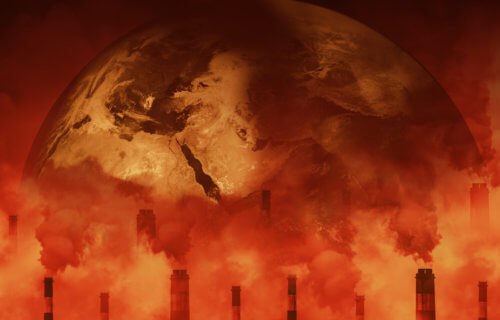CAMBRIDGE, Mass. — The warming effect of greenhouse gases has been overestimated, and an international team of researchers may have pinpointed the reason why.
Smoke particles preserved for hundreds of years in Antarctica are changing how climate change experts view the impact of greenhouse gases on the planet. In particular, predicting how surface temperatures on Earth respond to these gases, which trap heat from sunlight within our atmosphere, has long been a challenge. Scientists have warned of the devastating impact of even slight changes in ocean temperatures in recent years. Now, this latest discovery that reveals more about how manmade fires even before industrialization were still prominent.
“Most studies have assumed less fire took place in the pre-industrial era,” says senior author Dr Loretta Mickley, a climate scientist at Harvard, in a statement. “The ice cores suggested a much fierier past – at least in the Southern Hemisphere.”
The international team ran computer simulations of wildfires and the burning practices of indigenous people in Australian, Africa and South America.
“The computer simulations of fire show that the atmosphere of the Southern Hemisphere could have been very smoky in the century before the Industrial Revolution. Soot concentrations in the atmosphere were up to four times greater than previous studies suggested,” explains Jed Kaplan, an associate professor at the University of Hong Kong and co-author of the study. “Most of this was caused by widespread and regular burning practiced by indigenous peoples in the pre-colonial period.”
The study published in Science Advances sheds fresh light on climate change.
How fire activity from previous generations can help predict the future
Modeling suggests as land use changes reduced fire activity, emissions from industry increased. The key is significant smoke aerosols that were identified in the pre-industrial Southern Hemisphere ice core samples.
“Up till now the magnitude of past fire activity, and thus the amount of smoke in the pre-industrial atmosphere, has not been well characterized,” says first author Dr Pengfei Liu, also from Harvard. “These results have importance for understanding the evolution of climate change from the 1750s until today, and for predicting future climate.”
They could help predict how fast surface temperatures will rise in response to increases in greenhouse gases. It is the biggest uncertainty in climate change. Calculating warming and cooling effects in the atmosphere is complicated. Greenhouse gases heat the planet’s surface. Aerosol particles from volcanoes, fires and other combustion cool it by blocking sunlight or seeding cloud cover.
Understanding sensitivity to each of the effects and how they interact is critical. Most climate models rely on past levels to validate forecasts. Greenhouse gases are well-documented, but the amount of smoke aerosols was not, until now.
So the researchers looked to Antarctica, where the ice trapped particles emitted from fires in Australia, Africa and South America. They measured soot, a key component of smoke, deposited in an array of 14 cores from across the continent provided by collaborators.
“Soot deposited in glacier ice directly reflects past atmospheric concentrations,” says study co-author Dr. Joe McConnell, from the Desert Research Institute in Nevada. “Well dated ice cores provide the most reliable long term records.”
The finding was a surprise. Still, it backs other ice core records that suggest humans were damaging the atmosphere long before the Industrial Revolution. People were mining and smelting copper in South America as early as 1400 BC. The Incas introduced the smelting of silver ore, which often contains lead, in the 15th century. Air pollution took off further when the Spanish conquistadors invaded South America in the 16th century.
Greenhouse gases viewed from a new lens in the future?
Underestimating the cooling effect of smoke particles in the pre-industrial world has important implications. It suggests climate models have over-egged the impact of greenhouse gas emissions to account for the increases in surface temperatures.
“Climate scientists have known the most recent generation of climate models have been overestimating surface temperature sensitivity to greenhouse gasses,” says Liu. “But we have not known why or by how much. This research offers a possible explanation.”
Understanding the potential consequences on people are crucial in implementing strategies to reduce the future threat.
“Clearly the world is warming, but the key question is how fast will it warm as greenhouse gas emissions continue to rise,” adds Mickley. “This research allows us to refine our predictions moving forward.”
SWNS writer Mark Waghorn contributed to this report.
